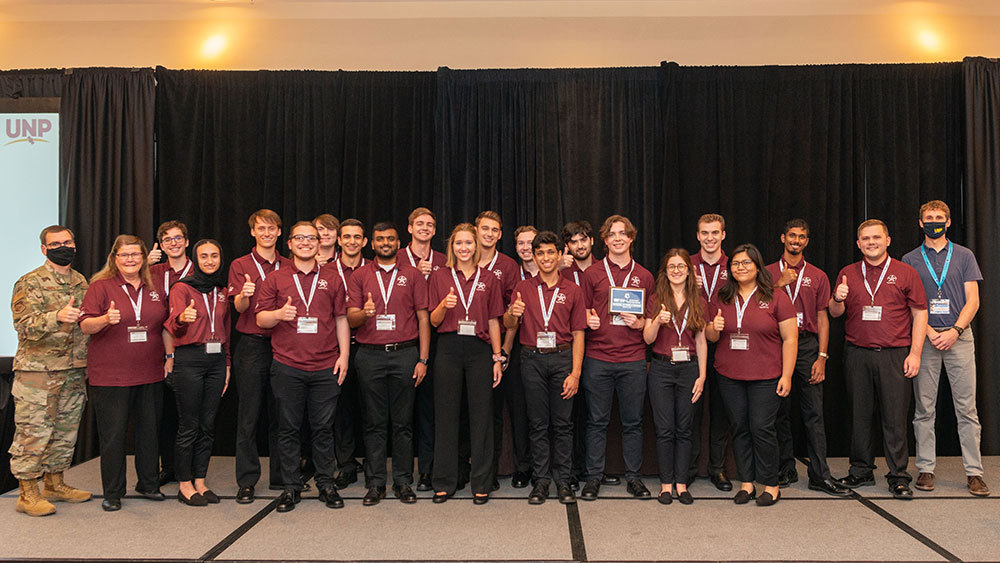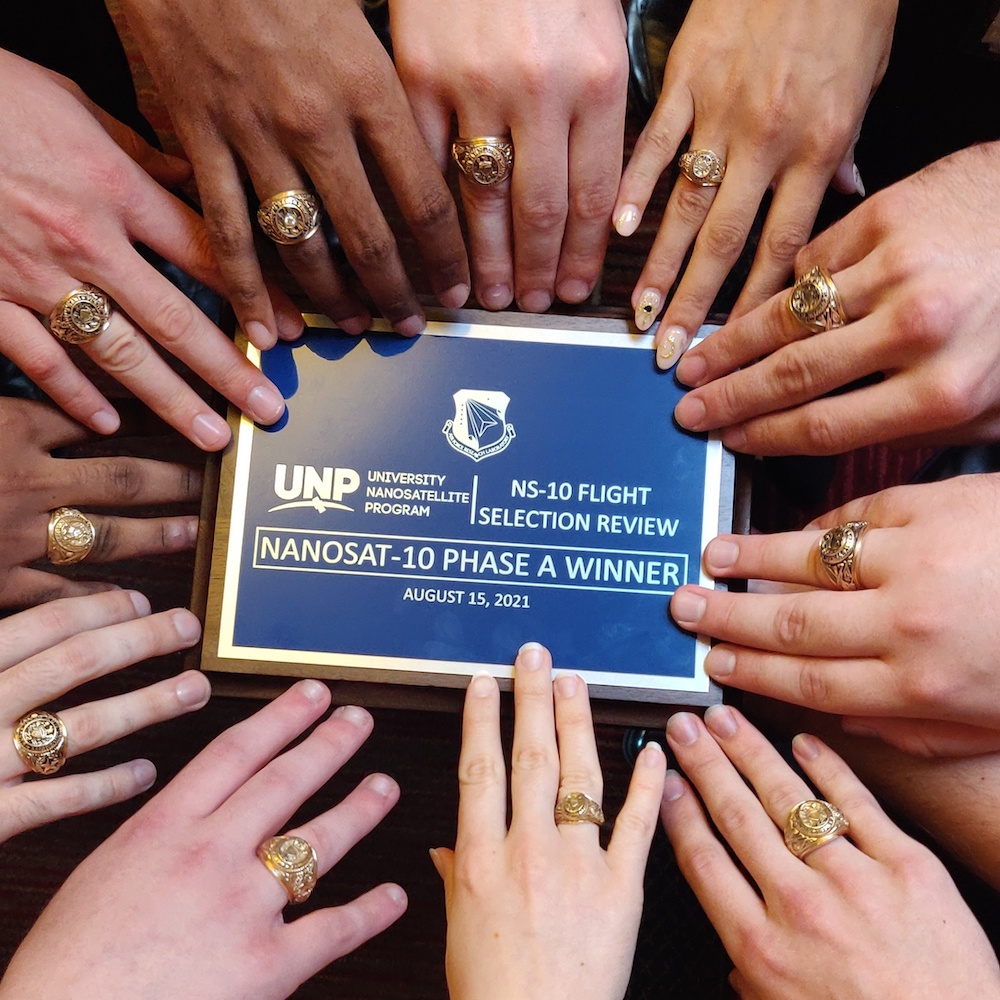
One of Texas A&M University’s small-satellite development teams, AggieSat6, won the Air Force Research Laboratory University Nanosatellite Program (UNP) Flight Selection Review, advancing them to Phase B of the four-phase program. Later, Phase D will see the AggieSat6 satellite launched to low Earth orbit by the Space Test Program.
The intention of UNP is two-fold: to provide systems engineering training to students to prepare them for the industrial workforce and to develop small-satellite expertise at U.S. universities. The nationally recognized program is part of the President’s Portfolio of Science, Technology, Engineering and Math.
UNP calls on students across the U.S. to design, build, test and operate small satellites through a rigorous concept-to-flight-ready spacecraft development process. Ten universities were invited to present their mission designs to representatives from the Air Force, Space Force and private partners in Albuquerque, New Mexico. This year, 19 students from Texas A&M traveled to the competition, where their work was scored on documentation, presentation, and hardware and software readiness.
The mission of AggieSat6 is to advance a critical aspect of space operations called Space Domain Awareness (SDA), which aims to track and determine the location of objects orbiting in space, be it other satellites or debris. Current tracking systems are ground-based, but AggieSat6 is attempting to track objects in space, from space.
Equipped with an array of antennas, AggieSat6 will listen for and detect signals emitted from other satellites. The signal data collected will be processed using an algorithm that allows AggieSat6 to pinpoint the position of a target satellite based on phase differences in the antennas. By taking multiple measurements over time, AggieSat6 will then be able to determine the orbits of the satellites.

AggieSat6 is advised by Dr. Helen Reed, University Distinguished Professor in the Department of Aerospace Engineering, and is composed of over 60 student members spread across nine sub-teams.
“It is my privilege to be able to interact with such a talented and dedicated group of young professionals,” said Reed. “I am extremely proud of what this team has accomplished thus far.”
With continued funding and support from UNP, the team will now purchase hardware, construct and test the engineering and flight models of the AggieSat6 satellite, then launch the flight model with the Space Test Program.
AggieSat6 is one of four projects currently hosted by the AggieSat Laboratory. The lab, fully managed by students with the guidance of Reed, had a fall 2021 membership of over 100 students from 15 different majors. More information about the lab’s projects and the students working on them can be found at the AggieSat Laboratory's website.
“Texas A&M University is a tier-one research institution with one of the largest student bodies in the United States, so it's fitting to have a student satellite program that matches that prominence,” said Alexander Duffy, lab program manager. “The AggieSat Laboratory is filling the role by granting students hands-on experience in space systems engineering and project management. Moreso, the lab fosters an environment of friendship and collaboration, thanks to which I've forged bonds that will last for years to come.”
In addition to Texas A&M, the other two teams to advance to Phase B of the Nanosatellite-10 program were Michigan Technological University and the University of Minnesota.